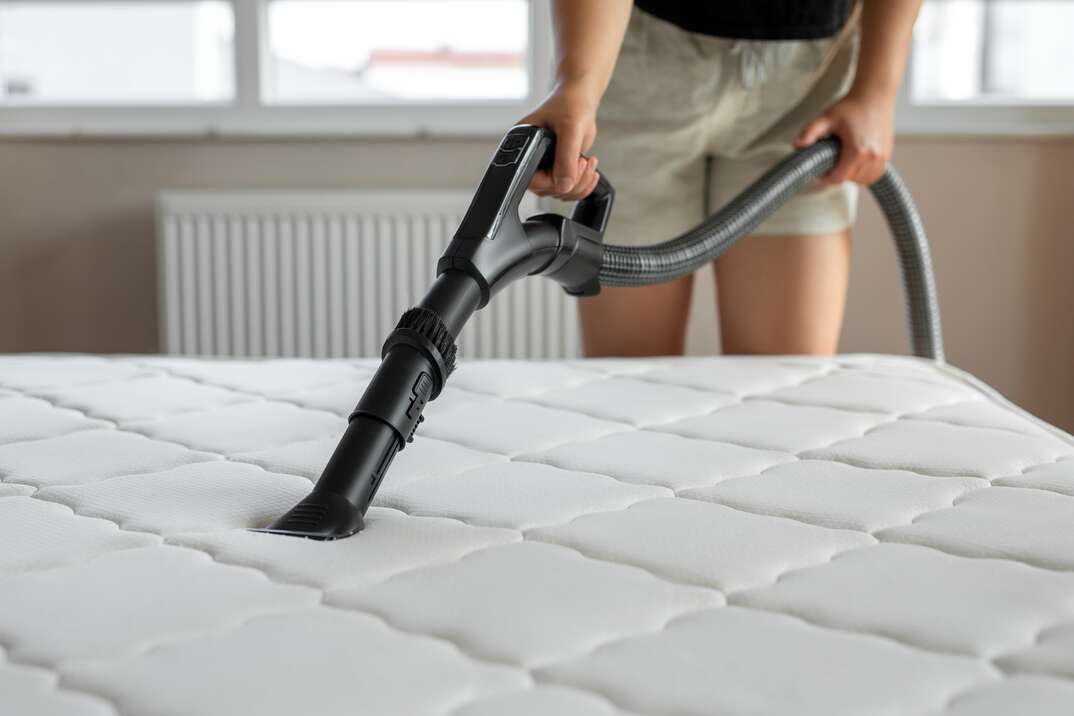How to Vacuum Your Mattress

Our mattresses play a crucial role in providing us with a good night's sleep, but they often go overlooked in our regular cleaning routines. Allergens, dust mites and other particles can accumulate over time, impacting both the hygiene and longevity of your mattress.
This May Also Interest You: Showerhead Sickness: You’re Going to Want to Deep-Clean Your Showerhead After This
This is where regular vacuuming comes into play.
Why Vacuum Your Mattress?
Dust Mites and Allergens
Mattresses are a breeding ground for dust mites, which are tiny creatures that feed on dead skin cells. These tiny pests can trigger allergies and breathing problems such as sneezing or asthma attacks. Regular vacuuming helps remove dust mites and their waste, creating a healthier sleeping environment.
Allergies and Respiratory Health
Over time, mattresses can accumulate allergens like pollen, pet dander and mold spores. If you suffer from allergies or respiratory problems, these particles can exacerbate your symptoms. Vacuuming your mattress helps eliminate these allergens, promoting better air quality in your bedroom.
Prolonging Mattress Lifespan
Dust, dirt and debris can settle into the fibers of your mattress, causing it to wear out faster. By incorporating regular vacuuming into your mattress maintenance routine, you can extend its lifespan, ensuring a comfortable and supportive sleep surface for a more extended period.
More Related Articles:
- No Hot Takes, Here: A Deep Dive on Deep Cleaning Your Oven
- The Pros and Cons of Induction Cooktops and Ranges
- 4 Surefire Methods for Cleaning the Crud Out of Your Microwave
- Choosing the Right Oven/Cooktop for Your Kitchen
- Coffee Taste Nasty? Here’s How to Clean Your Coffee Pot
Step-by-Step Guide to Vacuuming Your Mattress
Things You’ll Need:
- Vacuum cleaner with upholstery attachment
- Baking soda (optional)
- Essential oils (optional, for a pleasant scent)
- Clean, dry cloth
Step-by-Step:
Step 1: Remove Bedding
Begin by stripping your mattress of all bedding, including sheets, pillowcases and mattress covers. This allows you to access the entire surface for thorough cleaning.
Step 2: Vacuum the Surface
Use the upholstery attachment on your vacuum cleaner to remove surface dust, dirt and debris. Pay extra attention to seams, crevices and the edges of the mattress. Move the vacuum in overlapping strokes to ensure thorough coverage.
Step 3: Flip or Rotate the Mattress
If your mattress is flippable or can be rotated, take advantage of this to ensure even wear. Repeat the vacuuming process on the other side or in different areas.
Step 4: Apply Baking Soda (Optional)
For an extra deep clean and to eliminate odors, sprinkle a thin layer of baking soda over the entire mattress surface, trying to distribute it as evenly as possible. You can add a few drops of your favorite essential oil to the baking soda for a pleasant scent. Baking soda helps absorb moisture, neutralize odors and break down stains.
Step 5: Let Baking Soda Sit
Allow the baking soda to sit on the mattress for at least 15 minutes, but ideally longer, if possible. This gives it time to absorb any moisture and odors.
Step 6: Vacuum the Baking Soda
After the waiting period, use the vacuum cleaner to thoroughly remove the baking soda from the mattress. Ensure you go over the entire surface, paying attention to any areas with stubborn stains or odors.
Step 7: Wipe Down Edges and Seams
Take a clean, dry cloth and wipe down the edges, seams and any other hard-to-reach areas that the vacuum may have missed. This step ensures that no residual dust or baking soda remains on the mattress.
Step 8: Replace Bedding
Once you've completed the cleaning process, put clean sheets, pillowcases and mattress covers back on your bed.
How Often Should You Vacuum Your Mattress?
The frequency of mattress vacuuming depends on various factors, such as personal habits, allergies and the presence of pets. As a general guideline, aim to vacuum your mattress at least once every three to six months. If you have allergies or respiratory issues, consider doing it more frequently, perhaps every two to three months. Additionally, if you have pets that share the bed with you, a monthly vacuuming routine may be necessary to remove pet dander and hair effectively.
Incorporating regular mattress vacuuming into your cleaning routine is a simple yet effective way to maintain a clean and healthy sleep environment. It should only take a few hours a few times a year, but by using this step-by-step guide, you can ensure that your mattress remains a peaceful, healthy refuge rather than one that causes discomfort from allergens or odors. Ultimately, a well-maintained mattress not only promotes better sleep, but it also extends the lifespan of this essential piece of furniture in your home.


